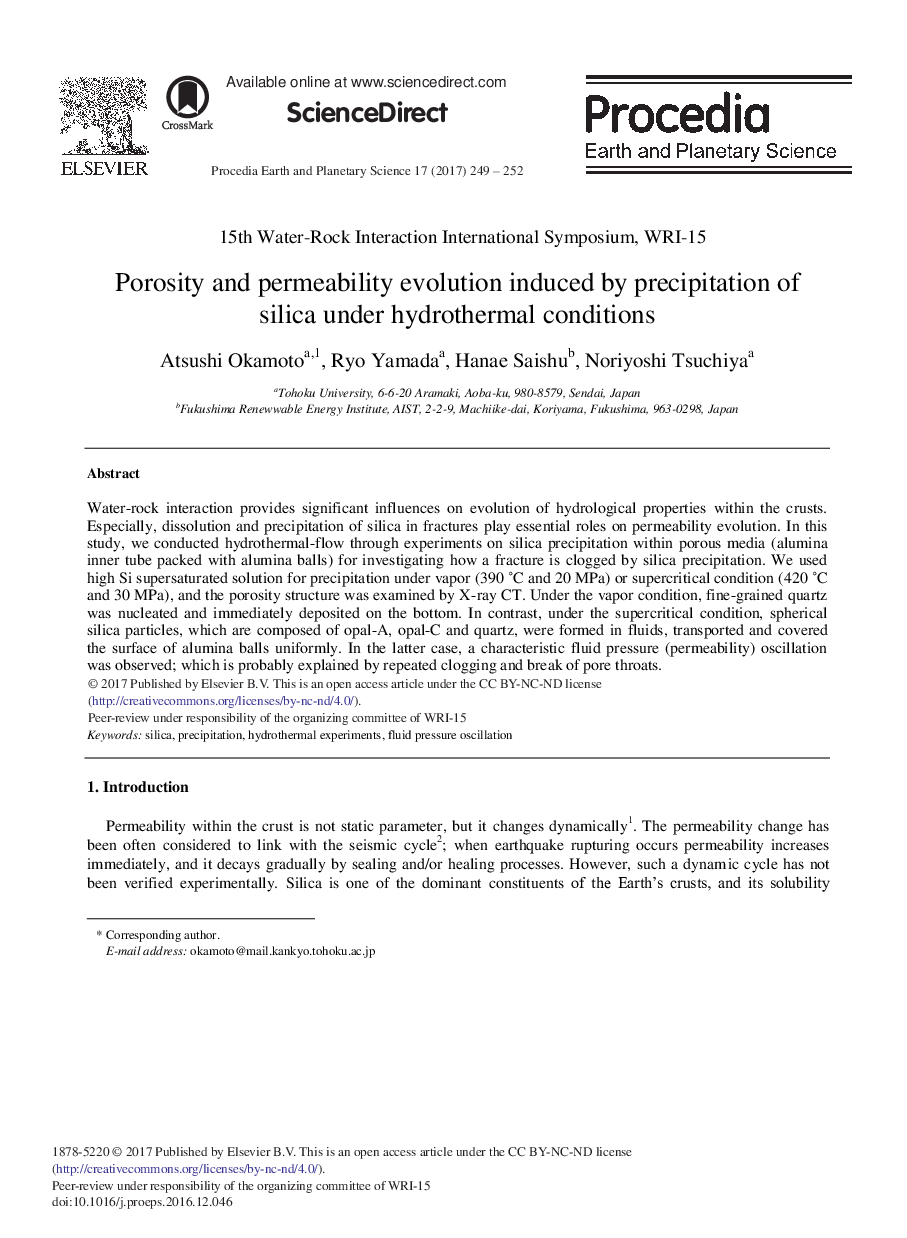| Article ID | Journal | Published Year | Pages | File Type |
|---|---|---|---|---|
| 5779281 | Procedia Earth and Planetary Science | 2017 | 4 Pages |
Abstract
Water-rock interaction provides significant influences on evolution of hydrological properties within the crusts. Especially, dissolution and precipitation of silica in fractures play essential roles on permeability evolution. In this study, we conducted hydrothermal-flow through experiments on silica precipitation within porous media (alumina inner tube packed with alumina balls) for investigating how a fracture is clogged by silica precipitation. We used high Si supersaturated solution for precipitation under vapor (390 °C and 20 MPa) or supercritical condition (420 °C and 30 MPa), and the porosity structure was examined by X-ray CT. Under the vapor condition, fine-grained quartz was nucleated and immediately deposited on the bottom. In contrast, under the supercritical condition, spherical silica particles, which are composed of opal-A, opal-C and quartz, were formed in fluids, transported and covered the surface of alumina balls uniformly. In the latter case, a characteristic fluid pressure (permeability) oscillation was observed; which is probably explained by repeated clogging and break of pore throats.
Related Topics
Physical Sciences and Engineering
Earth and Planetary Sciences
Atmospheric Science
Authors
Atsushi Okamoto, Ryo Yamada, Hanae Saishu, Noriyoshi Tsuchiya,
